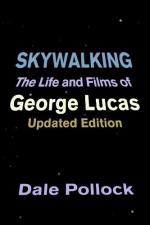|
This section contains 361 words (approx. 2 pages at 300 words per page) |
American filmmaker George Lucas's innovative and technologically advanced works include such popular movies as American Graffiti (1973), the Star Wars trilogy (1977, 1980, 1983), and the Indiana Jones series (1981, 1984, 1989). Lucas began his film career in the late 1960s while attending the University of Southern California. One of his class projects later became the cult classic THX-1138 (1971). Several years later he began work on Star Wars. Many industry experts believed that Fox Studios had made a huge error in financing this space opera; they predicted that the $10-million budget would bring the financially stricken studio to its knees. But Star Wars became one of the most successful movie franchises in film history and helped make Lucas one of the most powerful people in Hollywood.
Lucas's use of technology, especially the innovation of wedding cameras to computers, created a cinematic revolution. His technological innovations created a level of cinematic wizardry that made the unbelievable ultra-believable. Following Lucas's lead, the American film industry learned to make special effects more potent while the wizardry behind them became less visible. Lucas also introduced another powerful innovation in American filmmaking: merchandising. Lucas traded half his directing fees for the original Star Wars movie for merchandising rights, and the subsequent boom in Star Wars's goods—toys, video games, collectibles—flooded America and made Lucas a very wealthy man. In his many business ventures—Lucasfilm, Lucas Arts, Industrial Light & Magic—Lucas extended his creative and technical genius to a number of multi-media productions, ranging from television commercials to some of the most popular computer-based video games produced. In 1999—amidst a media frenzy that made him the subject of countless magazine and newspaper stories—Lucas returned to his first love when he directed and carefully orchestrated the release of Star Wars Episode I: The Phantom Menace.
Further Reading:
Champlin, Charles. George Lucas: The Creative Impulse. Revised edition. New York, Harry N. Abrams, 1997.
Jenkins, Garry. Empire Building: The Remarkable Real-Life Story of Star Wars. Secaucus, New Jersey, Carol Publishing Group, 1999.
Lucas, George; edited by Sally Kline. George Lucas: Interviews. Jackson, University Press of Mississippi, 1999.
Pollock, Dale. Skywalking: The Life and Films of George Lucas. New York, Da Capo Press, 1999.
|
This section contains 361 words (approx. 2 pages at 300 words per page) |


